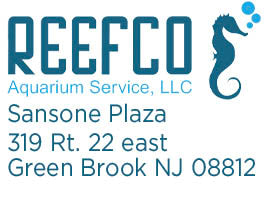How To Lower Nitrates After Cycling Tank?
Congratulations! You've successfully navigated the challenging process of cycling your saltwater tank, watching ammonia and nitrite levels rise and fall in what seemed like an endless dance. Now your reef system faces a new challenge: nitrate levels that may be dangerously high for marine life.
When testing reveals nitrates of 40 ppm or higher, don't panic. This is completely normal after cycling and easily correctable with the right approach.
Understanding the Nitrate Surge After Cycling
Your completed nitrogen cycle has established a biological filtration system where beneficial bacteria convert toxic ammonia into nitrite, then into nitrate as the final product. Unlike freshwater systems, saltwater aquariums require much stricter nitrate control due to the sensitivity of marine organisms.
The cycling process, especially in fishless cycles, leads to rapid nitrate accumulation because the system lacks natural consumption pathways. Nitrates represent the end product of bacterial processes and don't decompose naturally in most aquatic environments.
Many reef keepers experience a nitrate explosion after cycling. Post-cycle nitrate levels of 40-80 ppm far exceed the safe long-term levels of 5-20 ppm required for healthy saltwater aquariums. The good news? This nitrate accumulation proves your biological filtration is working perfectly.
Why Immediate Action Is Critical for Marine Systems
While nitrates pose less immediate danger than ammonia or nitrite, elevated levels in saltwater systems create serious problems. High nitrate concentrations stress marine fish, compromise their immune systems, and increase disease susceptibility. For corals, excessive nitrates inhibit growth, reduce coloration, and can trigger tissue recession.
Reef aquariums require pristine water conditions to thrive. Starting with manageable nitrate levels (under 20 ppm) makes all future maintenance significantly easier than battling readings above 40 ppm.
The Large Water Change: Your Primary Defense
Performing substantial water changes represents the fastest method for reducing post-cycle nitrates in saltwater systems. Once beneficial bacteria establish themselves, they can handle significant water exchanges without disruption.
When nitrate levels exceed 40 ppm, perform water changes, removing 75-90% of tank water. This dramatic approach is both necessary and safe for cycled systems. Here's the proper execution:
Preparation is essential. Test your source water's nitrate content before beginning, as you cannot reduce nitrates below your mixing water's baseline. Prepare replacement saltwater using quality reef salt, ensuring proper salinity (1.025-1.026 specific gravity) and temperature matching within 2-3 degrees of your tank.
Remove water methodically. Use a siphon to extract water while gently cleaning the substrate, achieving dual benefits. Never rush this process—your marine system requires careful handling to avoid stress.
Refill gradually. Add new saltwater slowly to prevent temperature fluctuations and maintain water chemistry stability. Even well-established biological filtration can be disrupted by sudden parameter swings.
The Intensive Monitoring Phase
Your biological filter will continue producing nitrates after the major water change, so levels will begin climbing again. Daily monitoring becomes crucial during this stabilization period. Perform daily water changes of 25-50% to maintain nitrate levels below 20 ppm until they stabilize naturally.
This regimen may seem intensive, but you're establishing a new equilibrium in your marine ecosystem. Transition to regular maintenance schedules once nitrates consistently remain below 15 ppm—typically achieved through 20-25% weekly water changes.
Long-Term Nitrate Management for Saltwater Systems
Water changes provide immediate relief, but sustainable nitrate management requires addressing the sources of nitrate production through multiple strategies.
Biological Nitrate Reduction: Consider establishing a refugium with macro algae like Chaetomorpha or Caulerpa. These marine plants consume nitrates as fertilizer while providing additional biological filtration. A properly sized refugium can significantly reduce water change frequency while maintaining stable parameters.
Optimize Feeding Protocols: Overfeeding remains the primary cause of excessive nitrate production in marine systems. Feed only what your fish consume within 2-3 minutes, immediately removing any uneaten food. Marine fish benefit from one fasting day per week, which also helps control nitrate accumulation.
Gradual Stocking Approach: Never fully stock a newly cycled saltwater tank immediately. Gradual fish introduction over several weeks allows your biological filtration to adapt while maintaining controlled nitrate production. Monitor nitrate levels closely during each addition.
Advanced Filtration Solutions: Incorporate specialized nitrate-removing media into your filtration system. Products containing zeolite or specialized resins help control nitrates, though they require regular replacement and shouldn't replace good husbandry practices.
Chemical Solutions and Supplements
Liquid nitrate removers and specialized filter media can provide additional support, but shouldn't serve as your primary strategy. These products work well as supplements to proper maintenance, especially in heavily stocked systems or during equipment failures.
When using chemical nitrate control products, follow the manufacturer's instructions precisely and maintain regular testing schedules. Some products can affect water chemistry unexpectedly, and overdosing may create new problems.
Monitoring and Long-Term Success
Once nitrates stabilize below 15 ppm, establish a regular testing routine. Weekly nitrate testing during the first month post-cycling helps you fine-tune your maintenance routine. Most successful reef keepers establish their rhythm within 4-6 weeks after completing the cycle.
Document your water changes, feeding amounts, and test results. This data proves invaluable for troubleshooting future issues and optimizing your maintenance procedures.
When to Investigate Further
If large water changes fail to control nitrates, investigate hidden sources. Common culprits include decomposing organic matter, overstocked bioloads, and dirty filter media. Dead spots in your aquascape can accumulate detritus, creating ongoing nitrate sources.
Test your source water if nitrates remain elevated, as some municipal supplies contain nitrates that make achieving zero readings through water changes alone impossible.
Conclusion
Managing nitrates after cycling represents another milestone in your reef-keeping journey, proving you've successfully established a thriving biological system. Consistent water changes, strategic stocking decisions, and proper feeding protocols will help you achieve long-term nitrate control.
Every successful reef keeper has faced these same challenges. The key lies in developing sustainable practices that fit your routine and lifestyle. A properly maintained saltwater aquarium with controlled nitrates will reward you with healthy, vibrant marine life for years to come.
Contact the Reefco Aquariums team if you need assistance with lowering your nitrates after cycling your saltwater system.



